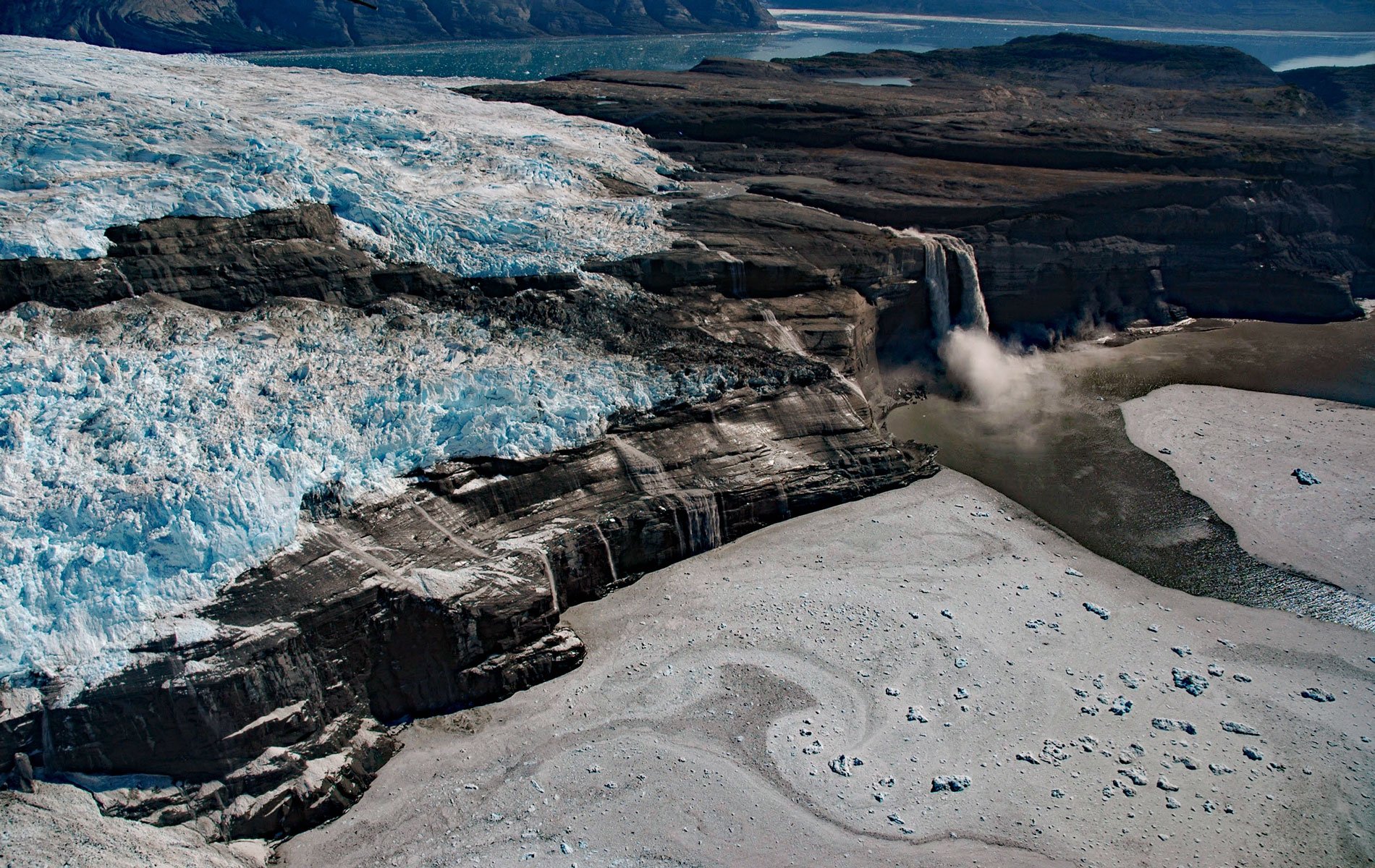Kashteen Peninsula is located in Wrangell-Saint Elias National Park and Preserve on the eastern shore of Icy Bay, between Tsaa Fjord to the south and Guyot Fjord to the north, and is emerging from under the retreating Guyot Glacier, about 149 miles (240 km) east-southeast of Cordova and 73 miles (118 km) northwest of Yakutat, Alaska. Kashteen and Tsaa are names from the Tlingit language, with the latter referring to the earless seal or true seal. Guyot Glacier was named after Arnold H. Guyot who was a geologist and geographer at Princeton University. The south coast of Alaska in general, consists of a collage of seven tectonostratigraphic terranes that formed in the equatorial Pacific Ocean and rafted northward on oceanic plates, eventually accreting to Alaska and the North American continent. The Yakutat terrane is in the process of accreting and is bounded on the east by the Fairweather Fault, and on the north by a system of faults in the Chugach Mountains and Saint Elias Mountains. The Kashteen Peninsula and most of the bedrock exposed by the retreating Guyot Glacier represents the Yakutaga Formation that consists of mudstone, siltstone, sandstone, and diamictite that developed during the Miocene and Pliocene in a marine and glacio-marine clastic continental shelf deposit.
In 1794, Lieutenant Joseph Whidbey, with the Vancouver Expedition, explored the coast near present-day Icy Bay, but at that time the Guyot Glacier was joined with the Tyndall and Yahtse glaciers to form a massive ice front that reached the Gulf of Alaska and was thought to be the western lobe of the Malaspina Glacier. Glacial retreat began in 1899 and started to expose what is now Icy Bay. Guyot Glacier had an ice front that was over 6 miles (10 km) wide and was calving into deep water which led to a rapid retreat of more than 31 miles (50 km). The Kashteen Peninsula was completely covered by the glacier when it was photographed in 1938, and by 1969 the tip of the peninsula was exposed, and the Guyot Glacier had separated into three ice streams. In 1986, the Guyot Glacier had retreated a considerable distance up a newly exposed Guyot Fjord. In 1995, only a portion of the Kashteen Peninsula was covered by a small ice mass of 74 acres (30 ha), in 2000, the stranded ice masses were gone, and by 2010, the area had considerable vegetation development.
Tidewater glaciers terminate in the ocean at either a grounded terminus or floating ice tongue. The tidewater glaciers of Alaska are located on the seaward side of the Kenai, Chugach, Saint Elias, and Coast mountains and there are currently about 50, although the exact number varies during advance and retreat of individual ice streams. Almost all tidewater ice fronts today are withdrawn into inner fjord areas. As recently as 1960, the tidewater glaciers of Icy Bay shared a single terminus but have since separated into independent fronts. At present, there are five tidewater glaciers in the bay, the largest of which is Yahtse Glacier. A sixth glacier, called the Moraine or Apron Glacier, has recently retreated from tidewater. A repeating temporal cycle for tidewater glaciers has been described as a slow advance over the course of centuries, until thinning near the terminus initiates a rapid retreat that completes within decades, stabilizing only when the glacier has retreated into shallow water. In general, the retreat phase of a tidewater glacier can be triggered by changes in climate, but once the retreat is initiated the glacier’s behavior is only weakly influenced by climate, and glacier geometry becomes a primary driver. Read more here and here. Explore more of Kashteen Peninsula and Tsaa Fjord here:

